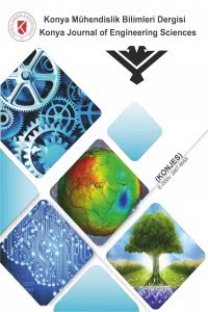Mevsimlik kar erimesinin yapay sinir ağları yöntemi ile tahmin edilmesi
Kış ayları boyunca devam eden katı yağışların oluşturduğu kar kütleleri durağan bir halde bekler. Bahar aylarının gelmesi ile birlikte başlayan erime sonucu statik haldeki su dinamik bir kuvvet olarak hareketlenir. Su ve çevre bilimi uzmanlarının amacı bahar ayları ile hareketlenen bu büyük miktardaki sudan maksimum faydayı elde etmek ve kontrolsüz durumda oluşturacağı zararı minimize etmektir. Bu optimum faydanın elde edilmesi ise yağışın ve erimenin doğru tahminine bağlıdır. Kar erimesinin tahmin edilmesi taşkınların önlenmesi, barajların ve diğer su kaynaklarının planlanması bakımından önemlidir. Kar erimesinin tahmini için geliştirilen birçok model bulunmaktadır. Bu modeller genel olarak derece-gün yöntemi ve enerji-kütle denge yöntemleri başlıklarında toplanabilir. Bu çalışmada ise birçok alanda başarı ile uygulanan yapay sinir ağları yöntemini kullanmıştır. Ülkemizde önemli miktarda ve uzun süreli periyotta kar yağışı Doğu Anadolu Bölgesinde meydana gelmektedir. Çalışma için geliştirilen yapay sinir ağları modeli, 1987–1995 yıllarında, erime dönemi olarak kabul edilen Mart-Mayıs aylarında Doğu Anadolu’daki Karasu-Kırkgöze havzasına uygulanmıştır.
Estimation of seasonal snowmelt using artificial neural networks
The great amount of snowpack still all through the winter time starts melting with the coming of spring and all that static water becomes a huge dynamic force. The fundamental aim of hydraulic and environmental engineers is to minimize the disaster due to its uncontrolled flow while benefiting from it the greatest. Evaluation of this optimum benefit is closely related with the correct estimation of snow precipitation and snowmelting which is very important for the counterbalance of overflow and the planning of dams and water resources in the area. There are several models for the estimation of snowmelt which may be classified in two groups as degree-day method and the energymass equilibrium method. Neural network method is used in this study, which has a wide area of application in engineering problems. In Turkey, the maximum amount and long period of snow is encountered in Eastern Anatolia region. Due to this fact, the model used in this study, is applied on the Karasu - Kırkgöze basin for March and May time span which is the snowmelt time for 1987-1995.
___
Anderson, E.A., 1968. Development and testing of snow pack energy balance equations, Water Resources Research, 4, 19-37.Anonim, 1990. Devlet Meteoroloji İşleri Genel Müdürlüğü Bülteni.
Demuth, H. and Beale, M., 2000. Neural network toolbox for use with MATLAB, User’s Guide, Math Works Inc., California.
Hagan, M.T. and Menhaj, M., 1994. Training feed forward networks with the Marquardt algorithm, IEEE Transactions on Neural Networks, 5, 989-993.
Haykin, S., 1999. Neural Networks, Prentice-Hall, New Jersey, USA. Jacobs, R.A., 1988. Increased rates of convergence through learning rate adaptation, Neural Networks, 1, 295-307.
Martinec , J., 1960. The degree-day factor for snowmelt-runoff forecasting, IASH Gen. Assembly of Helsinki, Comm. On surface waters, 468.
Tarboton, D.G., Luce, C.H., 1996. Utah energy balance snow accumulation and melt model, Utah Water Research Laboratory, Utah State University, Usda Forest Service, Intermountain Research Station.
Reidmiller, M. and Braun, H., 1993, A direct adaptive method for faster backpropagation learning: the RPROP algorithm, Proceedings of the IEEE International Conference on Neural Networks, New York, May 10-15, p.586-591.
U.S. Army, 1956. Snow Hydrology: Summary report of snow investigations, Department of Army U.S. Army crops of engineers, 437 s, Washington DC.
Yerdelen, C., Acar, R., 2005, Study on prediction of snowmelt using energy balance equations and comparing with regression method in the Eastern part of Turkey, Journal of Scientific and Industrial Research, 64, 7, 520-528.
Yerdelen, C., 2003, Dağlık Havzalarda Kar Erime Modeli ve Erzurum - Kırkgöze Havzasına Uygulaması, Doktora Tezi, Atatürk Üniversitesi, Fen Bilimleri Enstitüsü, Türkiye.
- ISSN: 1300-5200
- Yayın Aralığı: Yılda 4 Sayı
- Başlangıç: 2018
- Yayıncı: -
Sayıdaki Diğer Makaleler
Bazik boyar maddelerin Ağaçlı kömürlerinden elde edilen aktif karbon üzerinde adsorpsiyonu
Mehmet MAHRAMANLIOĞLU, İRFAN KIZILCIKLI, Adem ÇINARLI
Organize sanayi atıksularının zehirliliği
Mehmet Emin AYDIN, Gülnihal KARA
Murat KÜÇÜKHEMEK, Kemal GÜR, Ali BERKTAY
Türev tabanlı kenar çıkarma ile tam otomatik vektörizasyon
SAİM KORUR, Ercan H. OĞUZALP, Büyükşahin Süheyla SIRAMKAYA
Robust yöntemlerle uyuşumsuz ölçülerin belirlenmesi
Betonla donatı arasındaki aderans davranışının deneysel incelenmesi
M. Sami DÖNDÜREN, M. Tolga ÇÖĞÜRCÜ, MUSTAFA ALTIN
Normal dayanımlı beton mod-I elemanlarında boyut etkisi
SAİM KORUR, SELÇUK SAYIN, Ercan H. OĞUZALP, S. Zerrin KORKMAZ
